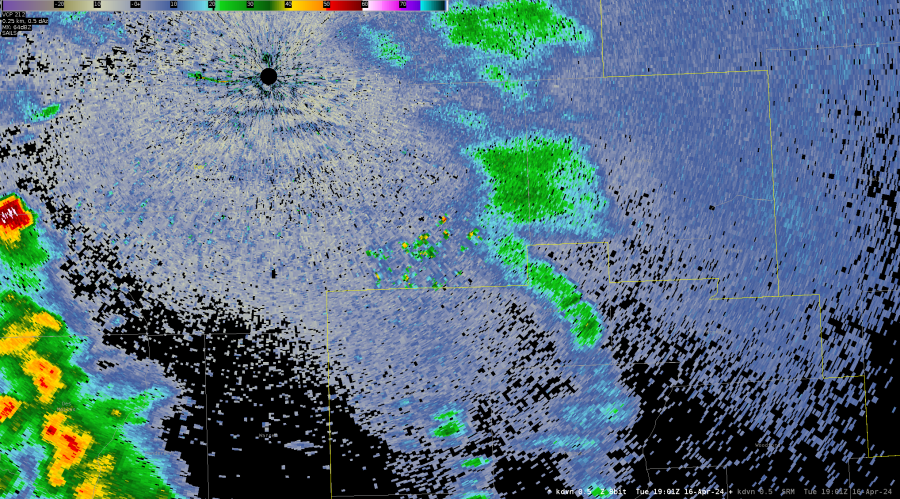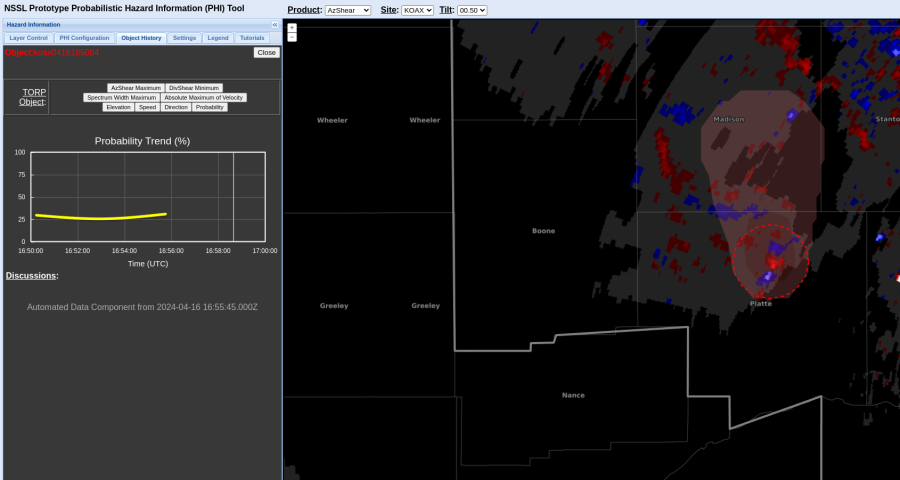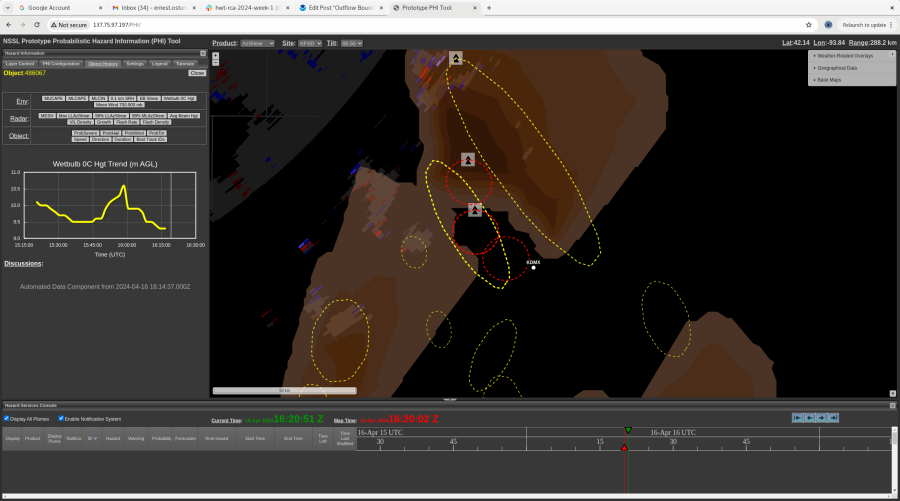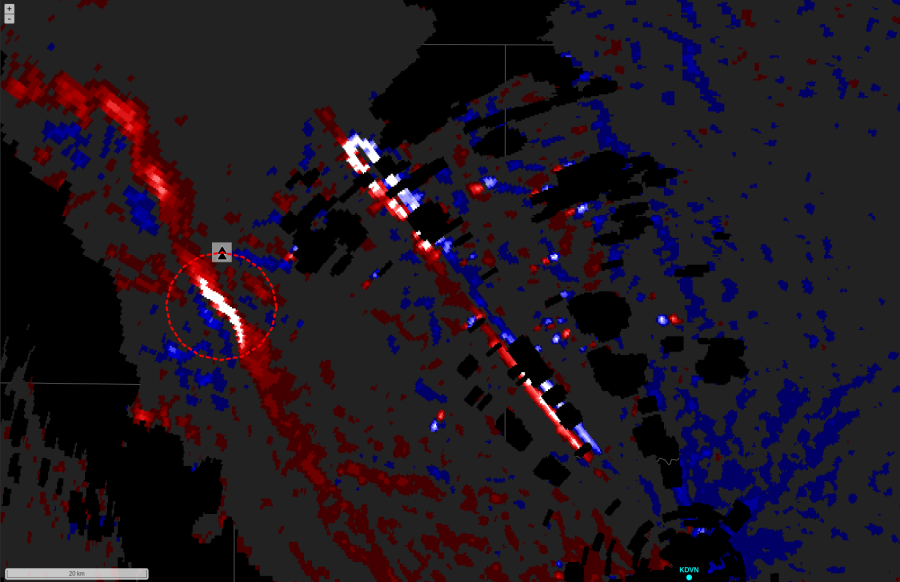
AzShear showed an interesting streak of both cyclonic and anit-cyclonic shear exactly down radial from the radar KDVN at 2025z. Just looking at that, it look like an artifact from the base velocity data down radial from the radar.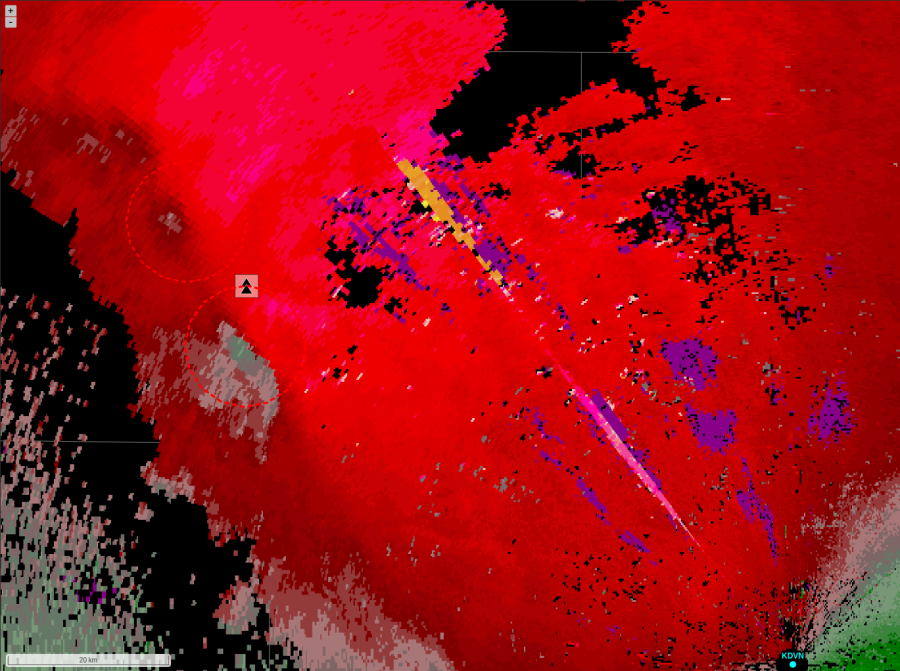

Looking at the reflectivity and velocity data, the issue seems to be beam blocking to the northwest of KDVN causing the erroneous AzShear values. Good to see that TORP is not influenced by this artifact.
-Stormy Surge

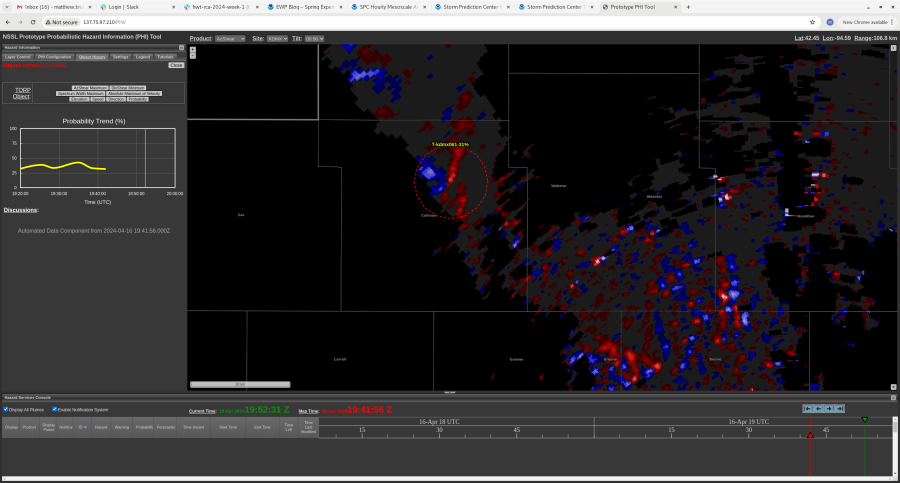
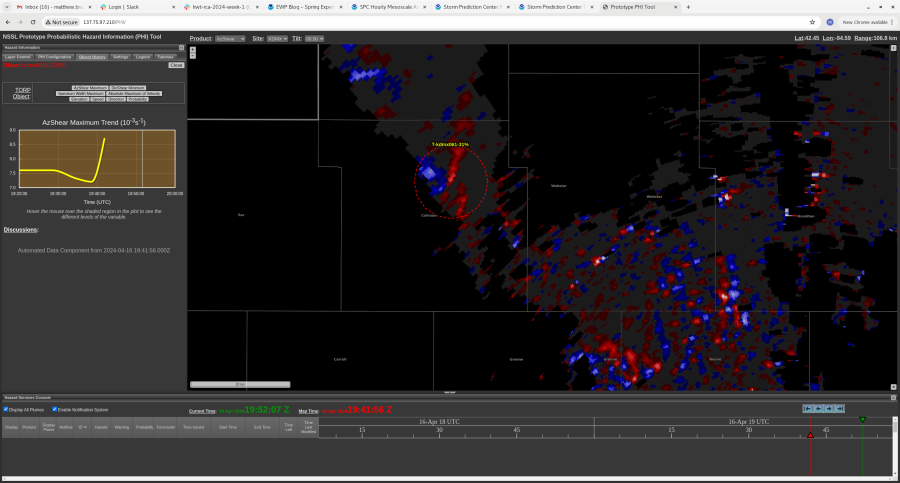


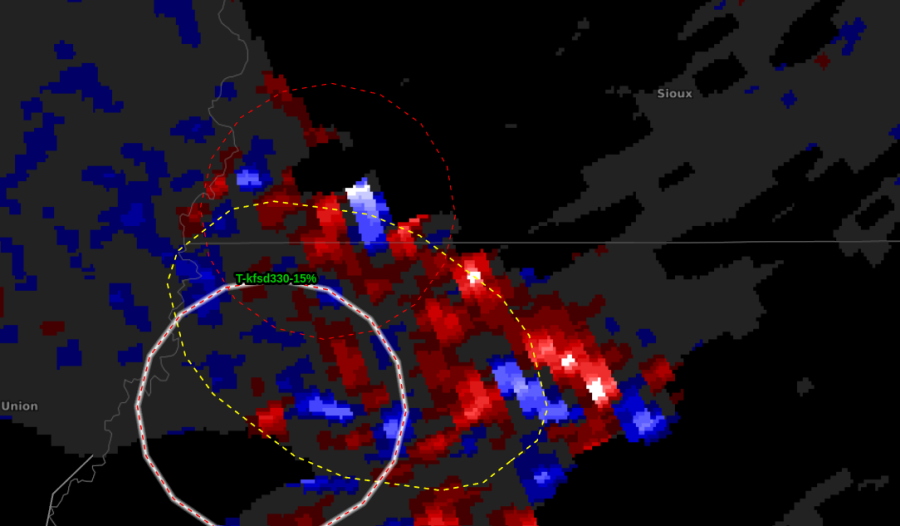
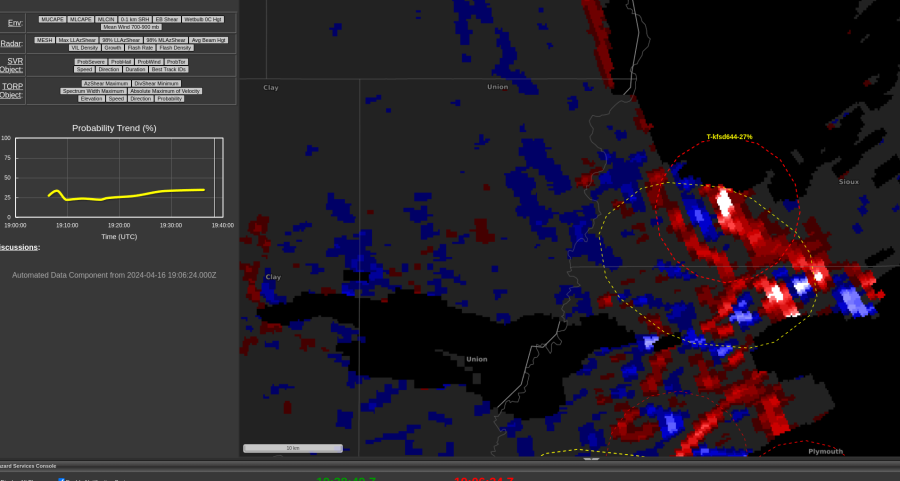

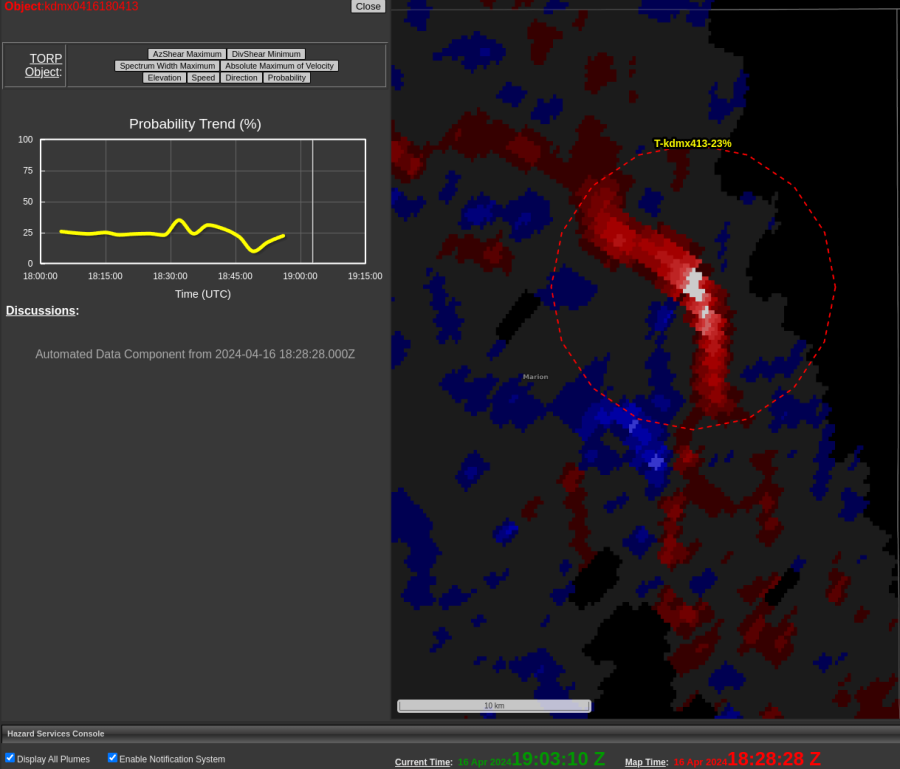
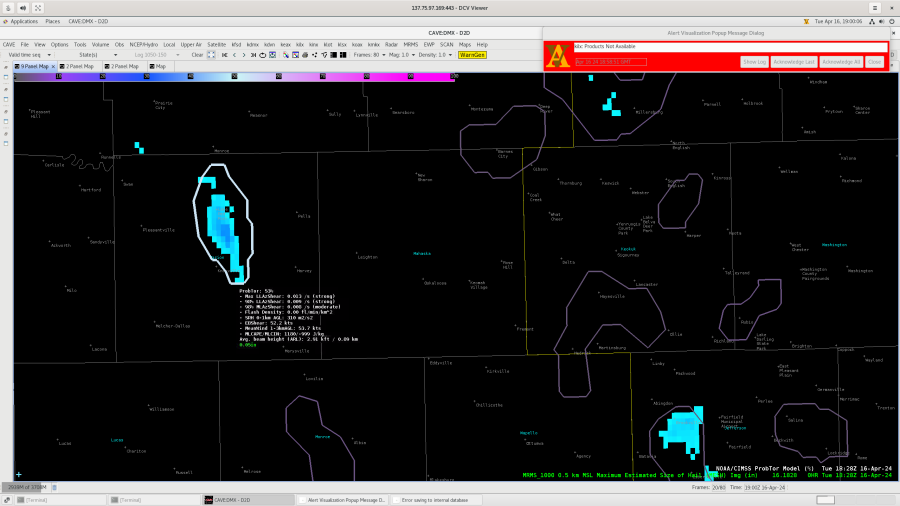
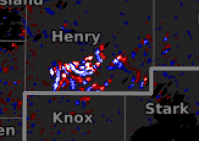 Maybe a wind farm? – Wildcat
Maybe a wind farm? – Wildcat 